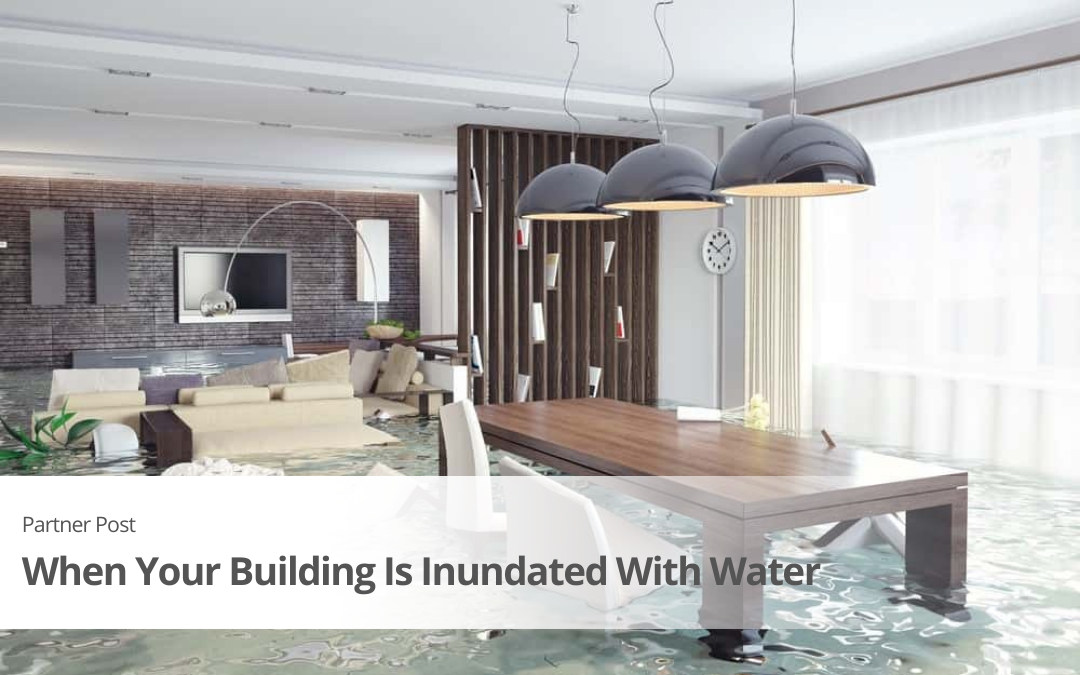Strata Community Insurance have created a simple 4 step process to help in this situation.
1. ENSURE THE SITE IS SAFE
Electrical – If any water has gone over electrical boxes, power outlets,or any other switches, you will need an electrician.
In most modern buildings, the wiring is insulated and will not require replacement.However, residual water (even a drop) in a power outlet can cause arcing and can prove harmful.
Plumbing – Water may be categorised as follows:
- Category 1: Known as ‘Clean water’ which does not pose a substantial threat to humans;
- Category 2: Known as ‘Grey water’ which may contain contaminants and may cause discomfort or sickness to humans; or
- Category 3: Known as ‘Black water’ which contains bacteria that are harmful to humans.
You need to consider the type of water that has inundated the property, as the clean-up process associated with each type will differ. A bathtub that overflows, for example, would be clean water and the resultant damage – such as to carpet – would simply require water extraction, cleaning and sanitisation.
In more severe cases, drying equipment will be used to artificially dry the carpet and subfloor, assisting in restricting mould growth. Carpet that is affected by black water, on the other hand, should not be salvaged. The best action plan in the case of black water would be to remove the carpet, clean and sanitise the floor, and replace the carpet.
Structural integrity – a building will generally suffer some form of integrity issue when inundated with water. This
may be as simple as plasterboard bowing, or may extend to long term rot or rust to framing, or even in extreme cases, to failure of foundations.
2. REMOVE ALL THE WATER
Extract water from internal areas, such as basements, common areas, from common carpets, etc. In relation to lots,while these are not necessarily the Body Corporate’s responsibility, Strata Community
Insurance suggests that all lots should be inspected for any sign of water after any significant event, as even the smallest amount of water may lead to mould growth – which will then become the Body Corporate’s responsibility. In the case of water inundation,lot owners should also contact their respective contents insurers immediately.
NOTE: Water extraction may require specialised equipment such as wet vacuums or sump pumps. While Strata Community Insurance understands the ‘desire to help’ from members of the Body Corporate, we cannot stress enough that the safety of individuals is always of paramount importance, and that full instruction and supervision should be maintained by a qualified/experienced tradesperson.
3. MITIGATE THE CHANCE OF MOULD
Moisture is the main issue here, and there is a tendency for people to want to artificially dry buildings. However, this is not the correct action in all cases. The success of artificial drying will vary, and is dependent on other factors (including climate). Conversely, artificial drying has been known to cause cracking and movement. Again, expert assistance should be sought before using artificial drying techniques, as natural drying maybe more appropriate depending on the circumstances.
NOTE: Mould requires organic matter for food, moisture, warmth and oxygen. The removal of one (or more) of these will inhibit mould growth.Therefore, cleaning and ventilation are your keys to mitigating mould.
4. REPAIR THE BUILDING
This part of the process may be long and tedious. Some parts (items within the building) will dry, require cleaning and will be perfectly functional irrespective of the categorisation of the water or degree of inundation.
The following items can be cleaned, dried and restored:
- Concrete slabs & walls;
- Timber and metal framing;
- Most new electrical wiring.
Hot water systems – Domestic models that are submerged are not repairable, whereas some commercial models can be cleaned, dried and restored.
Domestic appliances – once submerged, are not repairable.
Read more on this topic here
